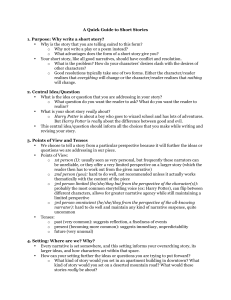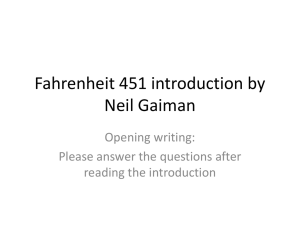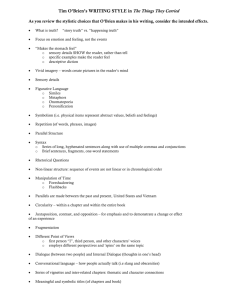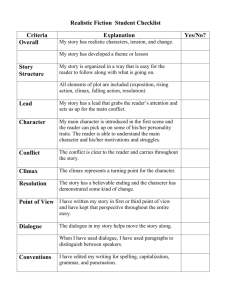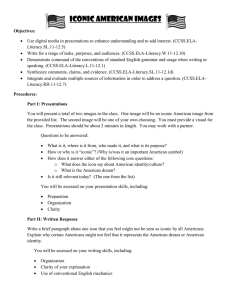A Quick Guide to Playwriting 1. Purpose: Why write a play? suited
advertisement
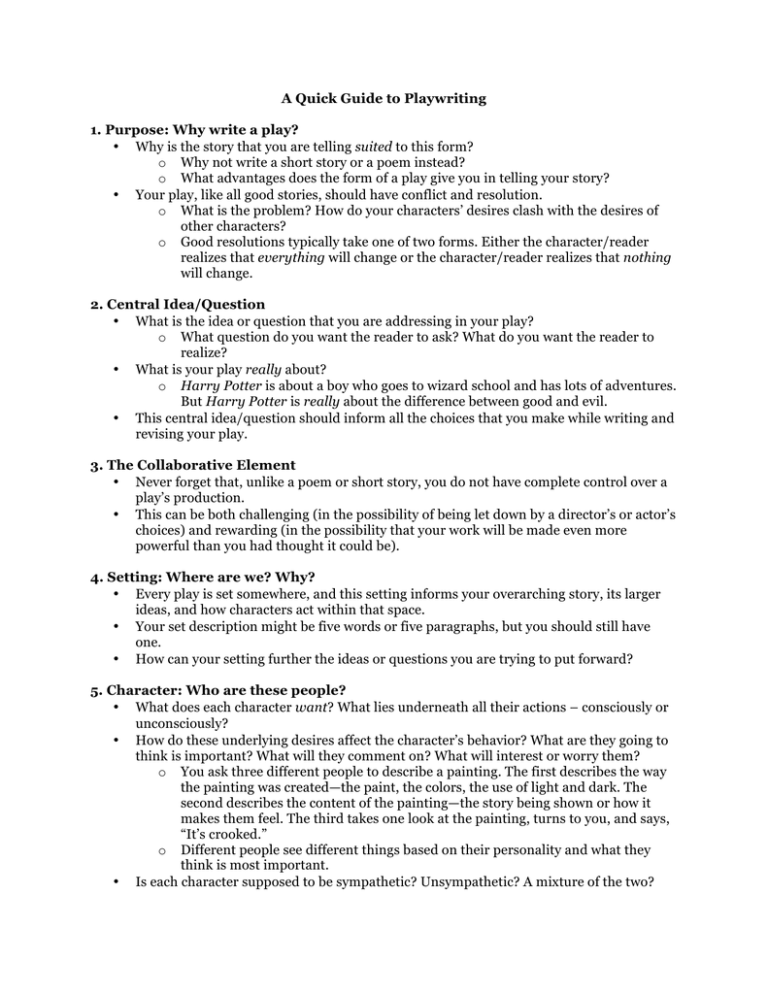
A Quick Guide to Playwriting 1. Purpose: Why write a play? • Why is the story that you are telling suited to this form? o Why not write a short story or a poem instead? o What advantages does the form of a play give you in telling your story? • Your play, like all good stories, should have conflict and resolution. o What is the problem? How do your characters’ desires clash with the desires of other characters? o Good resolutions typically take one of two forms. Either the character/reader realizes that everything will change or the character/reader realizes that nothing will change. 2. Central Idea/Question • What is the idea or question that you are addressing in your play? o What question do you want the reader to ask? What do you want the reader to realize? • What is your play really about? o Harry Potter is about a boy who goes to wizard school and has lots of adventures. But Harry Potter is really about the difference between good and evil. • This central idea/question should inform all the choices that you make while writing and revising your play. 3. The Collaborative Element • Never forget that, unlike a poem or short story, you do not have complete control over a play’s production. • This can be both challenging (in the possibility of being let down by a director’s or actor’s choices) and rewarding (in the possibility that your work will be made even more powerful than you had thought it could be). 4. Setting: Where are we? Why? • Every play is set somewhere, and this setting informs your overarching story, its larger ideas, and how characters act within that space. • Your set description might be five words or five paragraphs, but you should still have one. • How can your setting further the ideas or questions you are trying to put forward? 5. Character: Who are these people? • What does each character want? What lies underneath all their actions – consciously or unconsciously? • How do these underlying desires affect the character’s behavior? What are they going to think is important? What will they comment on? What will interest or worry them? o You ask three different people to describe a painting. The first describes the way the painting was created—the paint, the colors, the use of light and dark. The second describes the content of the painting—the story being shown or how it makes them feel. The third takes one look at the painting, turns to you, and says, “It’s crooked.” o Different people see different things based on their personality and what they think is most important. • Is each character supposed to be sympathetic? Unsympathetic? A mixture of the two? 6. Voice: How does each person sound? • The first rule of dialogue is that people rarely say exactly what they mean. o As Futurama puts it: “You can't just have your characters announce how they feel! That makes me feel angry!” o Don’t have your character tell us how they are feeling. Rather, have them show us through their actions, how they speak, what they speak about. o Usually we are only entirely truthful with ourselves during moments of crisis or disillusionment – and those moments will be all the more powerful because of that honesty. • Make sure the voice fits its setting (time period and location). Keep in mind the influences of things like gender and class on the way that people speak. • Try reading it out loud to make sure it sounds like real speech. If you stumble or if it feels false, try to make it feel more natural, more conversational. • Remember that dialogue isn’t just what we say, but also what we do while we say things. o “Good morning!” she said, smiling and kissing him on the cheek. o “Good morning!” she said, slamming the bowl of pancake batter onto the counter. o Although plays are mostly dialogue, stage directions can be significant.
